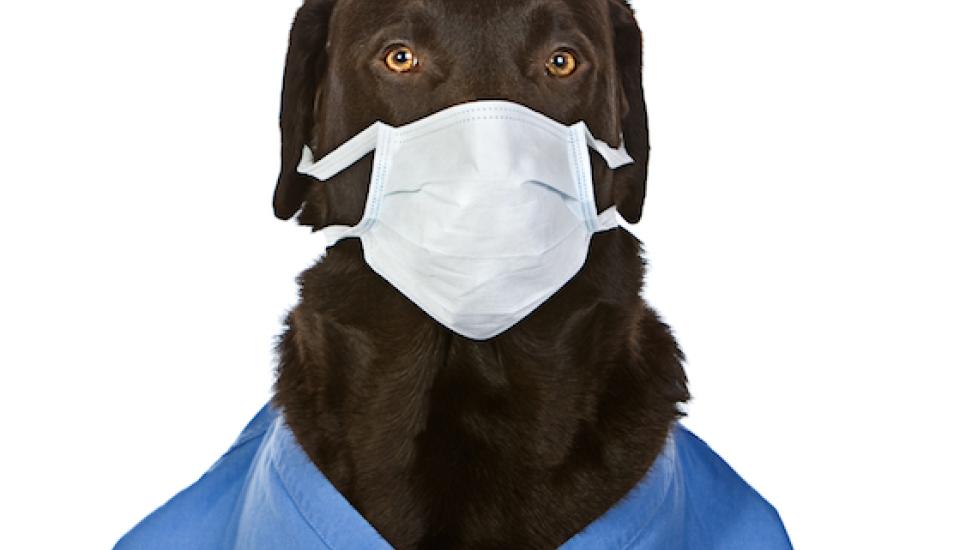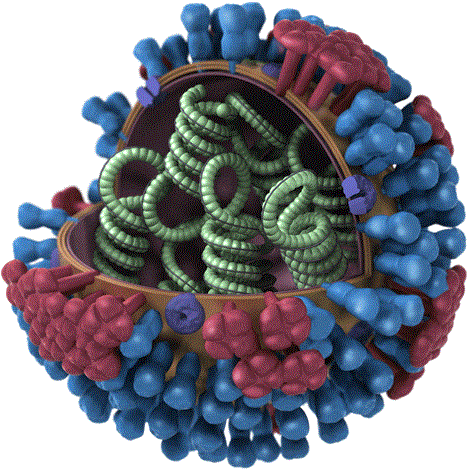Reduce the Potential for Zoonotic Disease Transmission
What makes a kid-friendly pet? From my standpoint as a clinical practice veterinarian, kid-friendly pets are those that won't directly traumatize a child or spread illness.
Pets always have the potential to traumatize a child by scratching, biting, or pushing one over. Additionally, a pet’s aggressive behavior, or an obvious size disparity, could intimidate a child.
An equally important issue affecting the relationship between pets and kids is the potential for zoonotic disease. Bacteria, viruses, fungi, parasites, or other agents (prions) all have zoonotic potential, meaning they can spread between animals and humans, or vice versa.
These diseases transfer among species through direct contact or with the help of a vector. An insect (arthropod) such as a flea, fly, tick or mosquito can serve as the vector for transmission of an infectious agent between animals within the same species (e.g., from dog to dog) or from an animal to a person (e.g., dog to person), as happens with zoonotic diseases.
The potential for zoonosis depends on a variety of factors, including climate, geography, population density, sanitary conditions (or lack thereof), grooming habits, and other factors.
Zoonotic diseases that are relatively common and have realistic potential to transmit between pets and people include (but are not exclusive to):
Bartonella
Bartonella henselae is a bacterium transmitted into animals through an arthropod vector, often fleas. Bartonella can then enter a person through a bite wound or scratch from a dog or cat (hence the name "Cat Scratch Fever"). Bartonella most commonly infects people with compromised or developing immune systems, including pregnant women, those suffering from HIV/AIDS or cancer, very young children, etc.).
E. Coli and Salmonella
Both bacteria can transmit directly between species or contaminate food and water sources. Pets can infect people with E. Coli and salmonella when fecal material contacts a person’s skin or clothes and enters through a body opening (mouth, nose, etc.).
This spirochete (spiral shaped) bacteria typically infects animals or humans after they have consumed or had direct exposure to water sources contaminated with urine from wildlife. Stagnant bodies of water or puddles from rainfall are common reservoirs for leptospirosis (commonly referred to as lepto). Humans can contract lepto from pets through contact with any body fluid, especially urine.
This protozoa (microorganism) commonly affects pets or people who drink water contaminated with feces from domesticated or wild animals. Dog parks, animal shelters and breeding facilities are hot zones for giardia.
"Worms"
Hookworms, roundworms and whipworms are parasites capable of infecting cats, dogs, and humans. Worms are most commonly found in kittens and puppies, and in adults living in cramped or unsanitary conditions.
Rabies virus transmission from an animal to a human (or from a bat or other wild animal bite) is uncommon in the United States, yet is often fatal when it does occur.
Influenza
Yes, the “flu” can transmit between people and pets, as was well documented during the 2009 H1N1 (Swine Flu, now termed North American Influenza) pandemic. Humans infected dogs, cats, ferrets, and even pigs (yes, humans gave swine flu to some pigs).
Dermatophytosis (ringworm)
Multiple fungal organisms (Microsporum sp., Trichophyton sp., etc.) cause this skin infection with the deceiving name (it’s not a worm). Patchy, circular, red, hairless lesions are the benchmark of this zoonosis. Dermatophytosis is a great imitator of other skin conditions (bacterial and yeast infections).
*
I’m merely going to lend mention to zoonotic diseases that are less common or non-existent (but for in laboratories) in the United States, including:
A hemorrhagic fever virus, popularized by the book and movie, The Hot Zone.
Transmissible Spongiform Encephalopathy (TSE)
A degenerative brain and spinal cord disease caused by a prion (self-replicating protein). An outbreak of Bovine Spongiform Encephalopathy (BSE), AKA Mad Cow Disease, in the mid-1990s resulted in a wave of anti-beef activism after Oprah Winfrey cast a spotlight on the beef industry.
The Bacillus anthracis bacterium produces toxins that often kill an infected animal or person within a few days. My experience of being cultured for Anthrax (my test was negative) and ingesting a course of Ciprofloxacin was one of the motivating factors that led to my move from post 9-11 Washington, D.C.
*
What's the key to keeping both your pets and children safe from zoonotic diseases? My top recommendation is to apply multiple precautionary tactics to your home, pets, kids, and self:
- Vacuum your carpets and upholstery (empty the canister outside and away from the home or seal the vacuum bag in plastic) and wash human and pet bedding on at least a weekly basis.
- Prevent your pet from entering environments that harbor populations of fleas, ticks, and other arthropods. If you must go into areas endemic with these organisms, do so only after your pet has been treated with veterinary prescribed anti-parasite medications.
- Follow your veterinarian’s guidelines on vaccinations for rabies and leptospirosis.
- Feed your pet cooked (over 160°F) meats, grains, and legumes (beans, etc.) instead of raw foods. Fruits and vegetables should be appropriately washed before they are consumed by people or pets.
- Frequently wash your hands with soap and water, especially after touching your pet.
- Avoid close contact with other people and pets when you are sick.

Dr. Patrick Mahaney
Image: JPagetRFphotos / Shutterstock
Last reviewed on July 31, 2015

